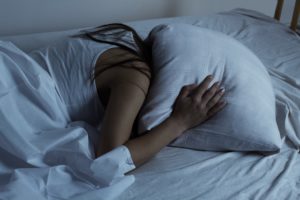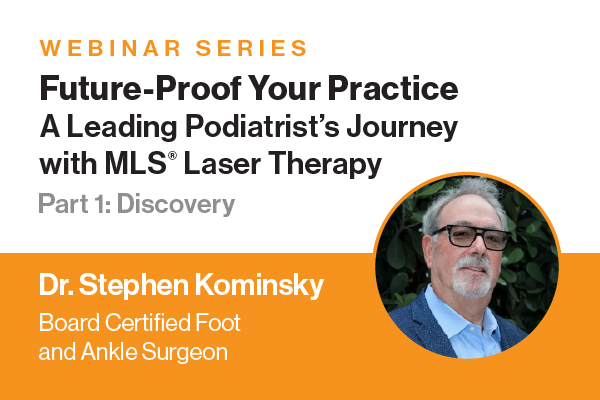How to help patients cope with chronic pain during the holidays.
For some, holidays are joyous times to be spent with family and friends, enjoying every moment. For those with chronic pain, knowing that pain lurks behind every activity, this can be a little more difficult. Through the cold weather (for us unlucky ones), pain medication, brain fog, and general stress of the holiday seasons, it may make family gatherings and events a little less “joyous”. Before your patients get overwhelmed and start to prefix this season with a big “BAH, HUMBUG”, let’s explore some tips to extend out to patients helping manage chronic pain this holiday!
1: Get Enough Sleep!

This may seem like a pretty simple and straight forward piece of advice for most, but those with chronic pain know that getting enough sleep isn’t always the easiest task. When dealing with pain getting enough rest can be difficult for a few different reasons; trouble falling asleep due to lack of comfort, staying asleep or falling into a deep sleep where we all want to be for a certain amount of time each night, and waking up earlier than desired. Listed below are some positive day and night sleep habits you can try to put yourself in the best position to get a good night’s sleep.
Positive habits to set yourself up for good sleep:
- Waking up / going to bed at the same time everyday
- Avoiding naps
- Getting adequate light exposure during the day and dimming lights in the evening
- Exercise before late afternoon
- Avoiding caffeine intake, or keep it limited to before lunch time
- Not stuffing yourself with food before bedtime
- Put away your phone/laptop/tablet (tuck away the technology screens) at least a half hour before bedtime
- Reserve the bed for sleeping, don’t lounge there during the day
- Eliminating light and noise from the bedroom (turning TV off)
- Lower the temperature to 68 degrees or lower at night
- Deep breathing or progressive muscle relaxation techniques.
- Recognize signs of tension and actively work to relax muscles, slow breathing, and calm down
- Getting up and doing something returning to bed only once feeling tired
2: Set Boundaries!
Shopping, buying, wrapping, cooking, cleaning, planning, preparing – having so many holiday tasks and stress come into play alongside of dealing with pain can be a hefty obligation for anyone (I’m stressed just thinking about my holiday to-do list as is, with no pain in sight!!).
It’s easy to feel completely bogged down and overloaded, that’s why its very important for people suffering from chronic pain to set realistic goals for what can be accomplished. Setting limitations and giving thought to what you can handle and still feel healthy and sharing those expectations with friends and family is crucial.
This allows them to understand what you can manage and what you’ll need help with. Try to focus on things that you enjoy, that make you happy. It may mean that the front tree doesn’t get it’s set of lights this year, or having your spouse take extra responsibility for shopping or cooking certain days. IT IS OKAY! Keeping yourself healthy and in a good mentality is more important to keep yourself as happy as possible this season.
3: Fight Off Seasonal Affective Disorder (SAD)!
Lack of sunlight from short winter days can trigger what is called seasonal affective disorder (SAD) for many people. Researchers think that the lack of sunlight can affect our biological clocks and hormone levels, but aren’t 100% sure what causes it. What we do know is that it might seem tempting to stay inside all day, maybe munch on some holiday treats, and forgo outside activity to avoid cold dark conditions. Yet, it may not be what you body needs from you and could actually worsen chronic pain and depression.
Some simple ways to try and avoid feeling down and out this winter:
- Bundle up and go on a 15-30 minute walk
- Stretching or working out (staying warm, maybe going for a swim!)
- Eating healthy, good for you foods (fruits and vegetables, plus lean protein, whole grains, and low-fat dairy)
- Lighten up! – Sit near the window or go outside when its sunny
- Stay positive – It’s easy to let stress get the better of us, but don’t let it dull your shine this season
4: Options!

Providing patients with pain management options can be the best gift this season. There are commonly many different medications such as, nonsteroidal anti-inflammatory drugs, antidepressants, anticonvulsants (anti-seizure) medications, muscle relaxants, and opioid pain killers available for treatment. Many doctors have deterred from prescribing opioids due to the opioid epidemic that has so heavily fallen on our country, alongside of the relief of these medications being a band-aid not a solution.
There are other options as well to treat chronic pain, such as injections (epidural steroid injection, facet joint injection, lumbar sympathetic block, celiac plexus block, stellate ganglion block). These injections can be a temporary solution for pain, but may come along with some side effects and do not always work for every patient.
Laser Therapy is quickly becoming the standard of care in alleviating both acute and chronic pain. This patented, FDA-cleared technology has an 85% – 90% efficacy rate in relieving pain and inflammation, eliminates risk from surgery and prescription pain killers, has no known negative side effects, and restores patients’ lives.
There are many types of lasers. Each laser has different characteristics which produce a different effect. These characteristics include:
- Energy: measured in joules
- Time: Defined as the duration of irradiance of target tissue and is measured in seconds. It is also known as Impulse Duration or called “impulse width”.
- Wavelength: Penetration depth is directed by the laser emission wavelength and the type of tissue (chromophores).
- Frequency: Defined as the number of impulses emitted during the unit of time (1 second) and should reflect the condition treated.
- Power: the rate at which energy is delivered and is measured in watts.
- Fluence: Energy Density or Dose
- Irradiance (Also known as Power Density): Power delivered per unit area
- Emission Mode: Continuous Wave (CW) or Pulsed Wave (PW)
- Impulse Duration: Duration of laser emission, also called “impulse width”.
Multiwave Locked System (MLS) Therapy Laser was developed in an effort to produce an efficient and simultaneous effect on pain, inflammation, and edema, exceeding the limits of traditional LLLT (low power) and concerns of HP (high power) laser therapy. Unlike early-generation Class IV technology, MLS Laser Therapy has the capability to deliver controlled laser energy. This unique feature provides more accurate therapeutic dose delivery, which means consistent and repeatable results. With high levels of efficacy, safety, and consistency, MLS Laser Therapy can help physicians relieve pain and restore lives.
Take a look at a case study on the effect of low level laser therapy in knee Osteoarthritis





